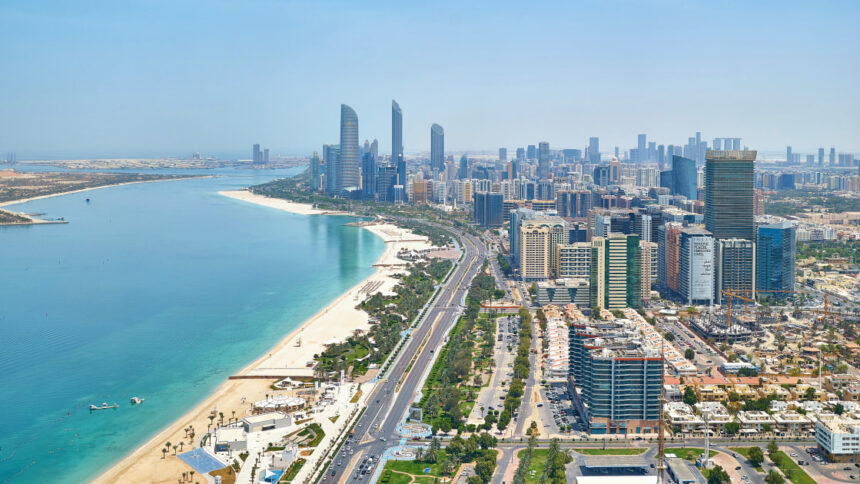Abu Dhabi GDP is forecast to grow at 2.5% in 2025. This growth will be driven by strong non-hydrocarbon activity. A report released revealed this positive economic outlook. The emirate is projected to see an average growth rate of 3.5% from 2026 to 2028. The report highlights the crucial role of non-hydrocarbon sectors, with annual growth expected at 3%.
S&P Global Ratings affirmed Abu Dhabi’s sovereign credit rating. Both foreign and local currency ratings were set at AA/Stable/A-1+. S&P expects limited impact from regional tensions on Abu Dhabi’s economy. This stability, coupled with consistent domestic conditions, supports the emirate’s positive economic outlook. The agency’s projections suggest strong resilience despite external uncertainties in the region.
Also Read: GCC and Malaysia Initiate FTA Talk to Strengthen Bilateral Trade and Investment
Abu Dhabi GDP Accelerates to 3.8% in 2024
Abu Dhabi’s real economic growth has shown a marked improvement. The economy grew by 3.8% in 2024, compared to 2.4% in 2023. This acceleration was primarily driven by the non-hydrocarbon sector, which expanded by 6.2%. Key contributing sectors include finance and insurance, construction, manufacturing, and wholesale retail trade. These sectors have played a significant role in Abu Dhabi’s diversification efforts.
The non-oil economy now contributes 54.7% to total GDP. This marks its highest share in Abu Dhabi’s history. The increase in non-oil sector contribution reinforces the emirate’s ongoing economic diversification strategy. The sustained growth in non-hydrocarbon activities is a vital part of reducing dependency on oil revenues.
Oil Sector Growth to Support Abu Dhabi GDP
Abu Dhabi’s oil sector remains a critical pillar of its economy. S&P expects the gradual lifting of OPEC+ quotas to support oil production. Oil production, after stabilizing at 2.95 million barrels per day (bpd) in 2023-2024, will rise to 3.04 million bpd in 2025. By 2028, they expect production to reach 3.50 million bpd.
Abu Dhabi has substantial oil production capacity. The existing capacity stands at 4.85 million bpd, providing an upside to projections. Additionally, new gas projects are expected to launch, further supporting the emirate’s economic growth. These developments will contribute positively to Abu Dhabi’s fiscal and external surpluses, according to S&P.
Government’s Fiscal Strength Offers Economic Stability
The Abu Dhabi government has one of the strongest balance sheets among sovereigns. The government’s accumulated assets provide a buffer against oil price fluctuations. S&P projects that government net assets will reach 327% of GDP in 2025. The government’s fiscal strength ensures resilience against external and fiscal shocks in the medium term.
Abu Dhabi GDP recorded a fiscal surplus of 6.7% of GDP in 2024. This is in line with the surplus record in 2023. S&P projects that the surplus will narrow to 2.8% of GDP in 2025. However, it is expect to rise again to an average of about 6.0% between 2026 and 2028.
Read More: European Bond Yields Fall Amid Trump’s Tariff Pause and Economic Concerns
Abu Dhabi’s population is project to continue growing at a rate of 3% annually until 2028. New job creation, socioeconomic reforms, and large infrastructure projects drive this growth. These factors will continue to attract migrant workers to the emirate. S&P forecasts that domestic demand and investment will remain robust due to strong regional demand.
Summary
Abu Dhabi’s economy is on a growth trajectory, driven by both hydrocarbon and non-hydrocarbon activities. S&P’s stable credit ratings and positive fiscal projections highlight the emirate’s economic resilience. Abu Dhabi is well-position for future growth with continued diversification, strong oil sector performance, and fiscal strength. The government’s strong balance sheet provides stability, ensuring that economic growth remains robust and sustainable.
Follow 10X Times for more business news.






